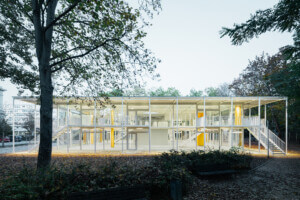Dr. Robert Ford, Anthony Hopkins’ character in the HBO television series Westworld, offered this insight to a child looking over his shoulder after rendering a snake inanimate with a gentle wave of his finger: “Everything in this world is magic, except to the magician.”
The show, now in its third season, revolves around a highly advanced Western-style theme park built in the near future and the humanoid robots that come to escape its perimeter to discover the real world beyond it. The impossibly lustrous, moody, pristine built environments of that world are the stuff of magic to the millions of viewers watching at home, while the hundreds of people responsible for that aesthetic—including visual effects supervisors, costume designers, cinematographers, and set decorators—perform as their magicians.
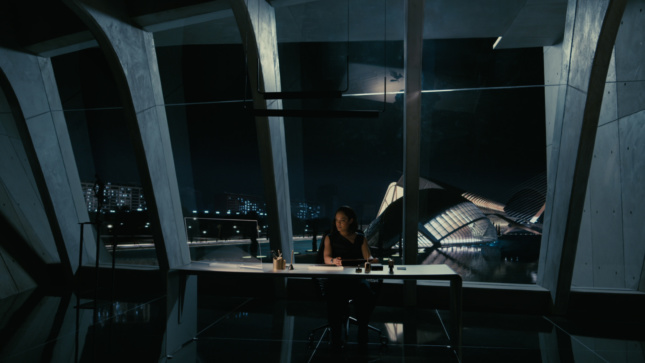
For the last two seasons, Howard Cummings has been the show’s production designer, matching the complex narrative with arresting visual storytelling. AN spoke with Cummings to learn how his team selected the buildings and fabricated those that do not yet exist to create the spellbinding background of the series.
AN: The show mostly takes place in Los Angeles in the year 2058. How did you determine the look and feel of the city nearly four decades from now?
Howard Cummings: We made sure to essentially do the opposite of the original Blade Runner (1982), which depicted the Los Angeles of the future as dystopian and dilapidated. Jonah Nolan, the co-creator of Westworld, wanted the city to look more advanced than it is now, as though climate change had been eliminated through carbon-catching towers, which are sometimes visible throughout the show. Public plazas are elevated, transportation is mostly below ground, and the use of personal cars is drastically reduced. But we were also able to take advantage of the recent building boom in the city, offering glimpses of newly completed buildings, such as the [Diller Scofidio + Renfro–designed] Broad Museum.
Aerial views of downtown Los Angeles also depicts fictional buildings next to currently existing skyscrapers. How was the design for those fictional buildings determined?
The downtown skyline is infilled with CGI buildings that were inspired by the city of Singapore. Its vertical greenery provided the look we were going for, which is partially mandated by the government. We would shut down sections of L.A. roadways to bring in planters, seating, and different types of green surfaces to make the city look a lot more green than it really is. We assembled a kit of roadway disguises that appear to accelerate the city’s current initiatives to become greener and more pedestrian-friendly. You may notice we also ‘completed’ the L.A. River project in some flyover shots, turning it into a fully functional river.
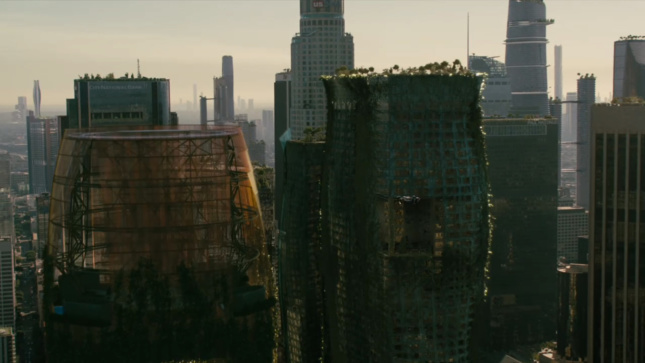
I heard that the Danish architect Bjarke Ingels was an informal consultant for the latest season. How did he become involved, and what input was he able to provide?
Bjarke sent a message expressing interest in the show before we shot the latest season. Because I was already familiar with his work, I wanted to invite him to visit before we shot the third season and he stayed for several hours to see how we film and design our sets. I then had him meet Jonah Nolan, and I learned that they were oddly alike in personality, so much so they even ended up going on sight-seeing trips together.
When it came to designing futuristic buildings for the third season, Bjarke offered to help by giving us the digital models of a bunch of projects of his own firm that were never realized. If you look at some of the aerial shots, his buildings can be seen sprinkled throughout.
How does real-world architecture factor into the show, and how did you decide which real-world buildings to include?
The first two seasons were almost entirely set within fictional settings. Viewers could generally only see the Westworld landscape [mostly filmed at Melody Movie Ranch, a Western-style film studio in Santa Clarita, California] and the all-glass, “behind-the-scenes” production spaces that were built for the show. When the Westworld characters venture out of the theme park in season two, we felt it was a good opportunity to showcase significant buildings around the world.
We were able to use Frank Lloyd Wright’s Millard House in Pasadena in the second season because the house was currently on the market during filming, and we had been looking for Wrightian houses at the time. This season, we wanted to go back to the house, but we weren’t allowed back because it had just been sold. Shooting in the actual house was quite difficult anyway because it’s small and highly protected, so at some point, it became more reasonable to rebuild it as a set.
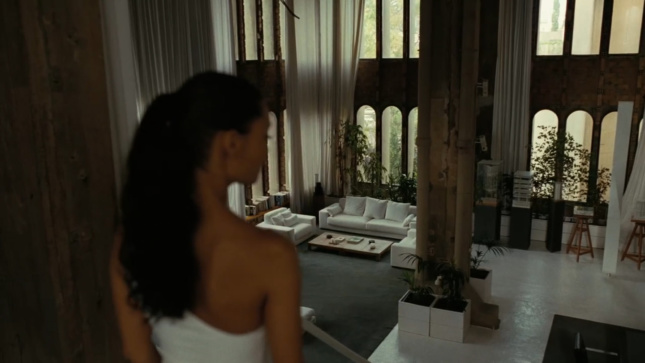
For the third season, we also scouted locations in and around Barcelona. While there, we chose Santiago Calatrava’s City of Arts and Sciences in Valencia, Spain as the headquarters for the Delos Corporation because it felt like a good setting for a tech campus.
Bjarke happened to be in the city when we were there, and Ricardo Bofill’s home, La Fábrica, was considered as a filming location. The building was originally cement silos fabricated using poured concrete. Bofill added some touches that included gothic-style archways; his work of the 1970s was so postmodern, and to me it was a weirdly timeless design that for me was the opposite of the Westworld labs which are all black and glass.
Bjarke connected us with Carlos Bofill, Ricardo Bofill’s son, who allowed us to tour inside the home. Jonah fell in love with it, and we eventually got permission to use it as a laboratory. Though there were a lot of restrictions, we got to film using several of the actual living quarters. But because we only had one day to film in there, we also had to build some interiors that were designed with Bofill’s original design in mind.
It seems that the buildings of the future are depicted as either rough-hewn concrete or from a white, plastic-like material.
Exactly. We felt that concrete provides a real atmosphere and texture to modern buildings. It can be formed into anything; it’s got incredible fluidity while still being foreboding. We’re trying to incorporate the concept of 3D printing into the show, as well as buildings that could be imagined as [being] 3D printed. Each episode takes about two weeks to produce, and with an average of 35 locations per episode, there were limitations regarding the use of 3D printing and scouting for concrete buildings. Fortunately, we were able to find plenty of areas in Los Angeles, Singapore, and Spain to match this aesthetic.
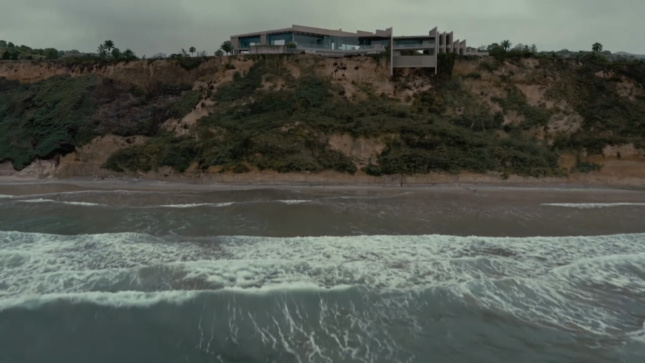
In the first episode of season three, for example, you see a concrete house that was supposed to be off the coast of China. That house is designed by Wallace E. Cunningham in Encinitas [near San Diego]. We were initially hoping to use the Salk Institute in La Jolla but ended up falling in love with this house with a texture that almost blends into the rocks beneath it.








